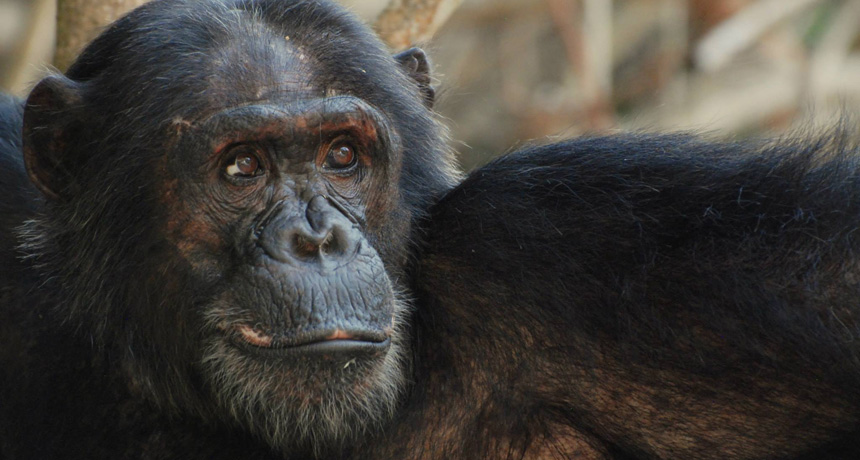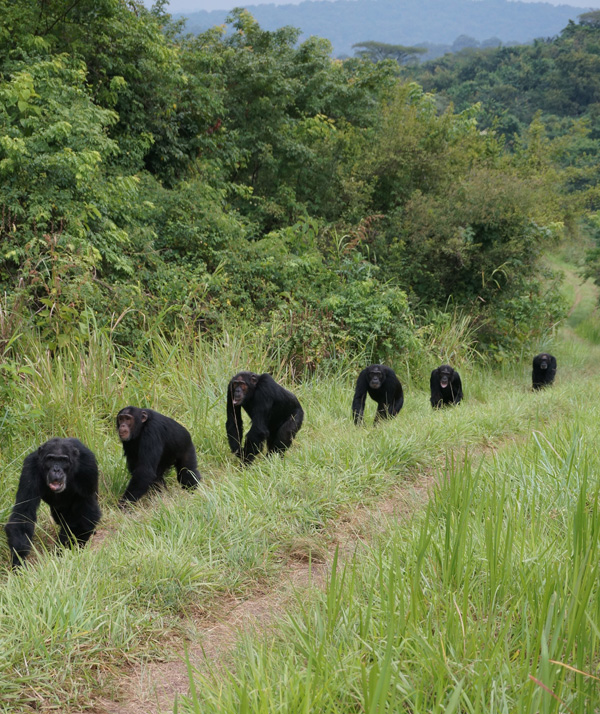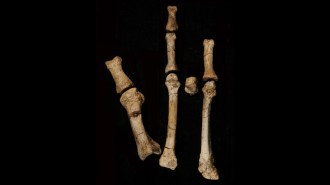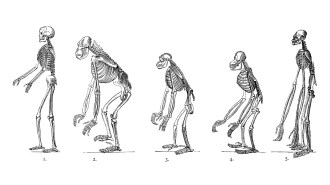Strategy, not habitat loss, leads chimps to kill rivals
Human impacts on the apes have not increased their violence

BAD DUDE Chimpanzee males, such as Titan shown here, kill stray members of nearby communities whom they perceive as rivals for food and mates, a new study finds.
Ian Gilby








